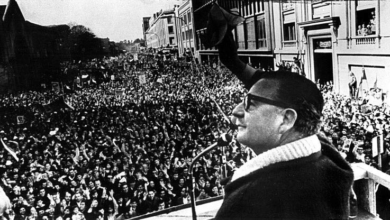 Thousands of Puerto Rican university students united to take on the right-wing colonial government—and they won. (Photo: Flickr/robertrex365) |
The long tradition of struggle in Puerto Rico was further enriched this year with a successful student strike across the island’s public university system. The strike against tuition hikes began on April 21 and was scheduled to last 48 hours, but endured for 60 days before the government finally conceded to the students’ demands.
Last year, the working class of Puerto Rico hit the streets to stop Gov. Luis Fortuño’s plan to fire 17,000 government employees and then extend the layoffs to 14 percent of the public work force—30,000 workers. Not since Puerto Rico rallied to chase the U.S. Navy out of Vieques a decade ago had so many different social sectors rallied around a single cause.
At the beginning of 2010, however, the public outrage created by Fortuño’s cutbacks had largely cooled down. But Fortuño was at it again, proposing to increase tuition and reduce aid to students, and threatening to privatize of the University of Puerto Rico system. These plans would have left tens of thousands of students without the opportunity for higher education. Instead of accepting Fortuño’s logic—which mirrors the logic of U.S. governors who claim the recession requires cutbacks—the students sprung into action. Drawing on their experiences from last year’s general strike, student leaders expressed confidence that the cutbacks could be defeated.
The University of Puerto Rico is one of the most prestigious schools in the Caribbean and the center of higher education on the island. When administration officials refused to negotiate in good faith, students voted overwhelmingly for a strike at the Río Piedras campus in San Juan, which has a student body of about 65,000. The action quickly spread to all 11 university campuses.
The students faced violent attacks by riot police assigned to break the strike. But the students were not isolated. In a historic meeting and vote, the faculty called for a general assembly and voted not to break the picket lines. Similarly, staff members and other workers within the university system honored the strike.
Various unions attended demonstrations, sit-ins and other actions on behalf of the students who were camped inside the school gates. The students’ parents offered support throughout the strike, defying the riot police by bringing food and water. Thanks to the high level of organization among the students, who held concerts and broadcast radio and video announcements about their actions, a large section of the Puerto Rican working class united to make sure the strike was successful.
The students were granted their central demands and agreed to end the strike. As their negotiating committee explained, this means “the continuation of tuition waivers for meritorious students, the cancellation of a planned special fee that would have raised the cost of study by 50 percent, the rejection of initiatives to privatize the university and a commitment not to enact summary sanctions against strike participants.” Showing their confidence, the students also pledged to approve another strike for January should the administration again attempt to raise tuition for the next term.
Wider implications of the struggle
Student struggles in Puerto Rico historically have repercussions in the broader society and are woven into the island’s major economic, political and social struggles. While some social analysts have viewed the current generation of students as less militant and political, clearly they were wrong. These events have surpassed many previous social struggles in creativity, strategy, and in the students’ ability to show both strong leadership and full participation.
Given Puerto Rico’s colonial status in a world where old-style colonies are almost extinct, a fight against the Puerto Rican government inevitably must deal with the U.S. government that stands behind it. Every social struggle has within it the seeds of a broader anti-colonial fight back. In fact, sectors of the student leadership are active in the independence movement, and this strike is likely to produce a new generation of pro-independence leaders.
The colonial government’s cutbacks and privatization program have already left Puerto Rico with massive unemployment, with the majority of people depending on some form of government assistance. The Puerto Rican student struggle showed the rest of the island that such policies can be defeated.
While the Puerto Rican students face their own unique conditions, they have also sent a message of hope to students and workers worldwide who are endlessly fed the lie that cutbacks are inevitable. U.S. students protested in large numbers in March against the nationwide attack on education, and that resistance is likely to intensify in the coming school year.
With this victory, we now have an example to point to and emulate. As Puerto Rican labor leaders, professors, and community and religious leaders alike all mentioned during the strike, the students gave everyone a catedra—or lesson—on how to wage a struggle and win.






